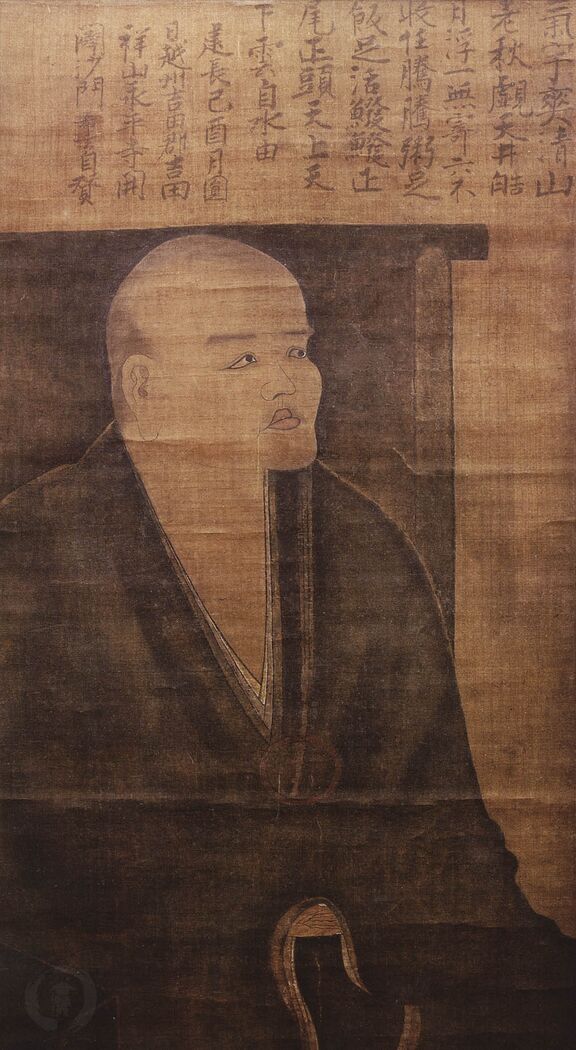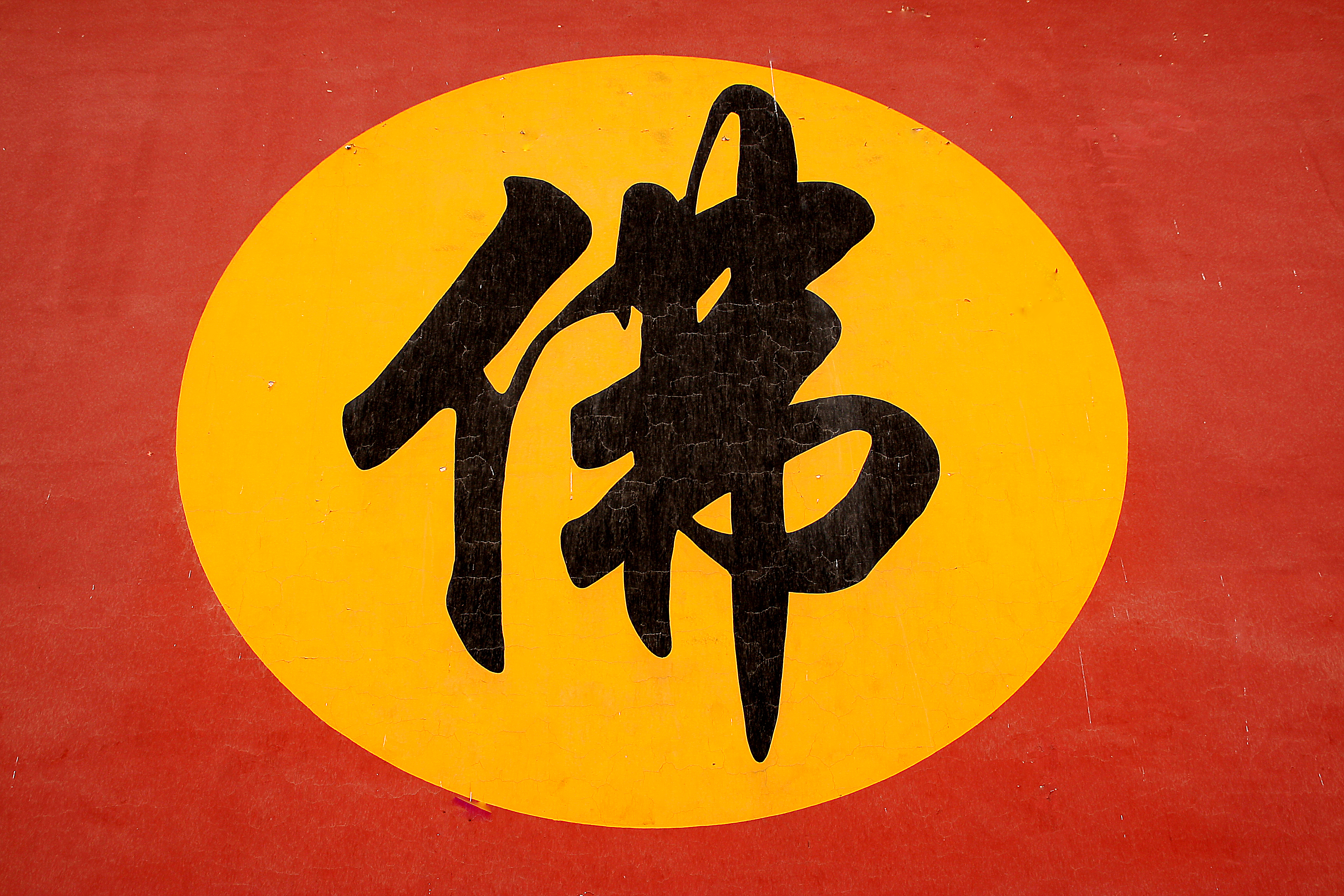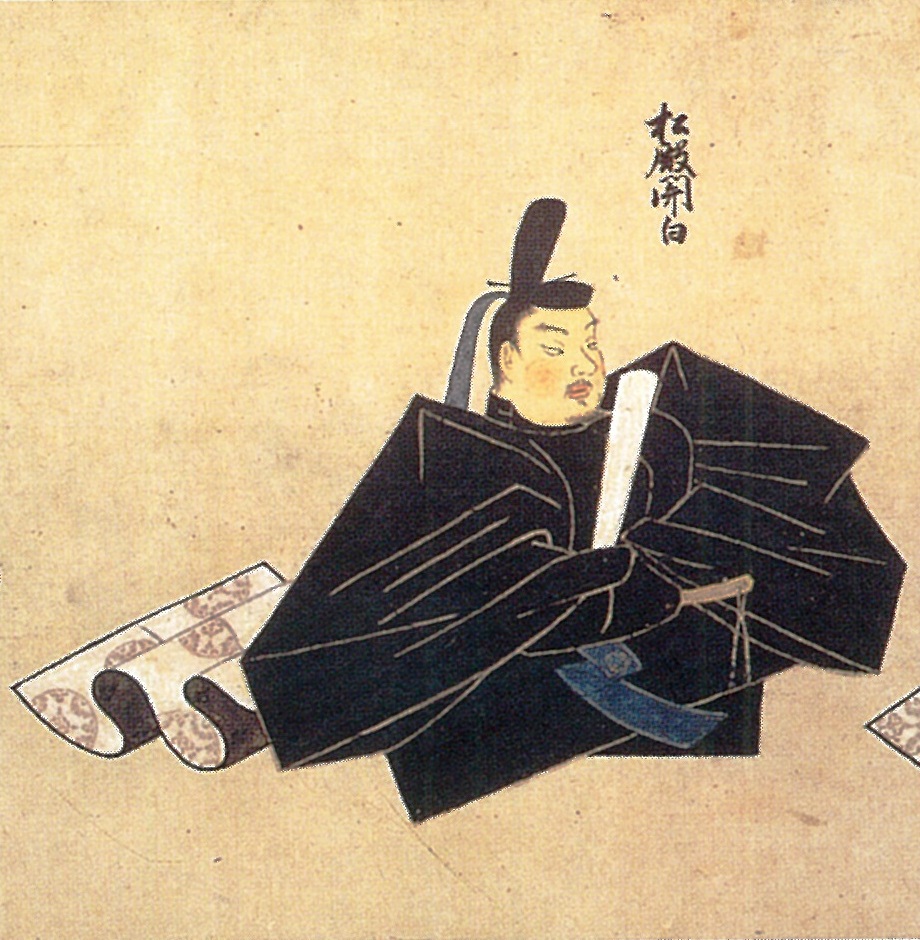|
Dōgen
was a Japanese people, Japanese Zen Buddhism, Buddhist Bhikkhu, monk, writer, poet, philosopher, and founder of the Sōtō school of Zen in Japan. He is also known as Dōgen Kigen (), Eihei Dōgen (), Kōso Jōyō Daishi (), and Busshō Dentō Kokushi (). Originally ordained as a monk in the Tendai, Tendai School in Kyoto, he was ultimately dissatisfied with its teaching and traveled to China#Imperial China, China to seek out what he believed to be a more authentic Buddhism. He remained there for four years, finally training under Tiantong Rujing, Tiāntóng Rújìng, an eminent teacher of the Caodong, Cáodòng lineage of Chan Buddhism, Chinese Chan. Upon his return to Japan, he began promoting the practice of zazen (sitting meditation) through literary works such as ''Fukan zazengi, Fukanzazengi'' and ''Bendōwa''. He eventually broke relations completely with the powerful Tendai School, and, after several years of likely friction between himself and the establishment, left ... [...More Info...] [...Related Items...] OR: [Wikipedia] [Google] [Baidu] |
Sōtō
Sōtō Zen or is the largest of the three traditional sects of Zen in Japanese Buddhism (the others being Rinzai school, Rinzai and Ōbaku). It is the Japanese line of the Chinese Caodong school, Cáodòng school, which was founded during the Tang dynasty by Dongshan Liangjie, Dòngshān Liángjiè. It emphasizes Shikantaza, meditation with no objects, anchors, or content. The meditator strives to be aware of the stream of thoughts, allowing them to arise and pass away without interference. The Japanese brand of the sect was imported in the 13th century by Dōgen Zenji, who studied Caodong, Cáodòng Buddhism () abroad in China. Dōgen is remembered today as the ancestor of Sōtō Zen in Japan along with Keizan, Keizan Jōkin. With about 14,000 temples, Sōtō is one of the largest Japanese Buddhist organizations. Sōtō Zen is now also popular in the West, and in 1996 priests of the Sōtō Zen tradition formed the Soto Zen Buddhist Association based in North America. Histor ... [...More Info...] [...Related Items...] OR: [Wikipedia] [Google] [Baidu] |
Shōbōgenzō
is the title most commonly used to refer to the collection of works written in Japan by the 13th-century Buddhist monk and founder of the Sōtō Zen school, Eihei Dōgen. Several other works exist with the same title (see above), and it is sometimes called the ''Kana Shōbōgenzō'' in order to differentiate it from those. The term ''shōbōgenzō'' can also be used more generally as a synonym for Buddhism as viewed from the perspective of Mahayana Buddhism. Source of the title Shōbōgenzō as a general term In Mahayana Buddhism, the term ''True Dharma Eye Treasury'' () refers generally to the Buddha Dharma; and in Zen Buddhism, it specifically refers to the realization of Buddha's awakening that is not contained in the written words of the Sūtra, sutras. In general Buddhist usage, the term "treasury of the Dharma" refers to the written words of the Buddha's teaching collected in the Sutras as the middle of the Three Jewels, Three Treasures of the Buddha, Dharma, and Sangha ... [...More Info...] [...Related Items...] OR: [Wikipedia] [Google] [Baidu] |
Eihei-ji
file:Plan Eihei-ji.svg, 250px is one of two main temples of the Sōtō school of Zen Buddhism, the largest single religious denomination in Japan (by number of temples in a single legal entity). The other is Sōji-ji in Yokohama. Eihei-ji is located about east of Fukui, Fukui, Fukui in Fukui Prefecture, Japan. In English, its name means "temple of eternal peace" (in Japanese, 'ei' means "eternal", 'hei' means "peaceful", and 'ji' means "Buddhist temple"). Its founder was Dōgen, Eihei Dōgen, who brought Sōtō Zen from China to Japan during the 13th century. The ashes of Dōgen and a memorial to him are in the ''Jōyōden'' (the Founder's Hall) at Eihei-ji. William Bodiford of University of California, Los Angeles, UCLA writes that, "The rural monastery Eiheiji in particular aggrandized Dōgen to bolster its own authority ''vis-à-vis'' its institutional rivals within the Sōtō denomination." Eihei-ji is a training monastery with more than two hundred monks and nuns in reside ... [...More Info...] [...Related Items...] OR: [Wikipedia] [Google] [Baidu] |
Fukan Zazengi
''Fukan zazengi'' (), also known by its English translation ''Universal Recommendation for Zazen'', is an essay describing and promoting the practice of zazen written by the 13th century Japanese Zen monk Eihei Dōgen. The date of its composition is unclear, and the text evolved significantly over the author's lifetime. It is written in Classical Chinese rather than the Classical Japanese Dōgen used to compose his famous Shōbōgenzō. It is traditionally thought to have been composed in 1227, shortly after Dōgen's return to Japan from his years of study in China. This is based on a statement to that effect in his essay Bendōwa from 1231. However, a manuscript of ''Fukan zazengi'' discovered in modern times that was produced by Dōgen's own hand ends with a Colophon (publishing) stating it was written in 1233. This version, known as the Tenpuku manuscript, also has a number of major differences from the more widely known version, the "vulgate version". The vulgate version, wh ... [...More Info...] [...Related Items...] OR: [Wikipedia] [Google] [Baidu] |
Eihei Kōroku
''Eihei Kōroku'' (), also known by its English translation ''Dōgen's Extensive Record'', is a ten volume collection of works by the Sōtō Zen monk Eihei Dōgen. The bulk of the text, accounting for volumes one through seven, are "Dharma hall discourses" (''jōdō''; 上堂), which are highly formalized Dharma talks, given from 1236 to 1252. Volume eight consists of "informal meetings" (''shōsan''; 小參) that would have taken place in Dōgen's quarters with select groups of monks, as well as "Dharma words" (''hōgo''; 法語), which were letters containing practice instructions to specific students. Volume nine includes a collection of 90 traditional kōans with verse commentary by Dōgen, while volume 10 collects his Chinese poetry. Unlike Dōgen's other major work the ''Shōbōgenzō'', which was written in vernacular Late Middle Japanese, the text of ''Eihei Kōroku'' is written in the Japanese version of Classical Chinese, known as Kanbun. While Dōgen is also better kno ... [...More Info...] [...Related Items...] OR: [Wikipedia] [Google] [Baidu] |
Bendōwa
, meaning ''Discourse on the Practice of the Way'' or ''Dialogue on the Way of Commitment'', sometimes also translated as ''Negotiating the Way'', ''On the Endeavor of the Way'', or ''A Talk about Pursuing the Truth'', is an influential essay written by Dōgen, the founder of Zen Buddhism's Sōtō school in Japan. History and background ''Bendōwa'' is Dogen's earliest known writing in Japanese. Although the text was written in 1231, making it the second piece he wrote following his return from China to Japan, it was not widely known for hundreds of years until the Kanbun Era (1661–1673), when it was found in a temple in Kyoto. In 1684, it was added in manuscript form by the monk Hangyo Kozen as the first fascicle of the 95-fascicle edition of Dōgen's already well-known master compilation, the ''Shōbōgenzō''. This format was standardized in 1788 with its first major printed publication. Despite its four-century absence from the compilation, today it is often said that it "c ... [...More Info...] [...Related Items...] OR: [Wikipedia] [Google] [Baidu] |
Rujing
Tiāntóng Rújìng (天童如淨; Japanese: Tendō Nyojō) (1163–1228) was a Caodong Buddhist monk living in Jìngdé Temple (景徳寺; Japanese: Keitoku-ji) on Tiāntóng Mountain (天童山; Japanese: Tendōzan) in Yinzhou District, Ningbo. He taught and gave dharma transmission to Sōtō Zen founder Dōgen as well as early Sōtō monk Jakuen (寂円 Jìyuán). His teacher was Xuedou Zhijian (雪竇智鑑, 1105–1192), who was the sixteenth-generation dharma descendant of Huineng. According to Keizan, when Ruijing became a leader, he didn't put himself above the other monks. He wore the black surplice and robe of a monk. He was given a purple vestment of honor by the emperor of China, but he declined it. Even after reaching enlightenment, he was willing to clean the bathroom. He is traditionally the originator of the terms ''shikantaza is Dogen's Japanese translation of the Chinese phrase ''zhǐguǎn dǎzuò'' (), "focus on meditative practice alone", although man ... [...More Info...] [...Related Items...] OR: [Wikipedia] [Google] [Baidu] |
Matsudono Moroie
, third son of Matsudono Motofusa, was a ''kugyō'' (high-ranking Japanese official) from the late Heian period to the early Kamakura period. Regent Fujiwara no Tadataka and Buddhist monks Gyōi and are his stepbrothers. His mother was Tadako , a daughter of Kasan Tadamasa and one of his sisters was Ishi, mother of Dōgen; shortly after Minamoto no Michitomo, Dōgen's father, died, Moroie adopted his three year old nephew until Dōgen ran away to his uncle Ryōkan, a monk living at the foot of Mount Hiei. Though he was not first-born, in 1179, the year his father became a monk, at age eight he was promoted to ''chūnagon'', one of ''Daijō-kan'' due to the political tension between Emperor Go-Shirakawa and Taira no Kiyomori. However, this caused backlash from Kiyomori, leading to the Jisho coup in the same year. When he was thirteen, Moroie was made ''naidaijin'' by Kiso Yoshinaka. In 1232, he ordained as a Buddhist monk and took the Dharma name A Dharma name is a n ... [...More Info...] [...Related Items...] OR: [Wikipedia] [Google] [Baidu] |
Tendai
, also known as the Tendai Dharma Flower School (天台法華宗, ''Tendai hokke shū,'' sometimes just ''Hokkeshū''), is a Mahāyāna Buddhist tradition with significant esoteric elements that was officially established in Japan in 806 by the Japanese monk Saichō. The Tendai school, which has been based on Mount Hiei since its inception, rose to prominence during the Heian period (794–1185). It gradually eclipsed the powerful Hossō school and competed with the rival Shingon school to become the most influential sect at the Imperial court. By the Kamakura period (1185–1333), Tendai had become one of the dominant forms of Japanese Buddhism, with numerous temples and vast landholdings. During the Kamakura period, various monks left Tendai to found new Buddhist schools such as Jōdo-shū, Jōdo Shinshū, Nichiren-shū and Sōtō Zen. The destruction of the head temple of Enryaku-ji by Oda Nobunaga in 1571, as well as the geographic shift of the capital away from ... [...More Info...] [...Related Items...] OR: [Wikipedia] [Google] [Baidu] |
Chan Buddhism
Chan (; of ), from Sanskrit '' dhyāna'' (meaning " meditation" or "meditative state"), is a Chinese school of Mahāyāna Buddhism. It developed in China from the 6th century CE onwards, becoming especially popular during the Tang and Song dynasties. Chan is the originating tradition of Zen Buddhism (the Japanese pronunciation of the same character, which is the most commonly used English name for the school). Chan Buddhism spread from China south to Vietnam as Thiền and north to Korea as Seon, and, in the 13th century, east to Japan as Japanese Zen. History The historical records required for a complete, accurate account of early Chan history no longer exist. Periodisation The history of Chan in China can be divided into several periods. Zen, as we know it today, is the result of a long history, with many changes and contingent factors. Each period had different types of Zen, some of which remained influential, while others vanished. Andy Ferguson distinguishes thr ... [...More Info...] [...Related Items...] OR: [Wikipedia] [Google] [Baidu] |
Matsudono Motofusa
was an imperial regent in the late 12th century, serving both Emperor Rokujō and Emperor Takakura. He was also called , as he came from the village of Matsudono, near Kyoto. Fujiwara no Tadataka and Matsudono Moroie were his first and third sons, respectively. Though wielding great power as ''sesshō'' and ''kampaku'', Motofusa was prevented from becoming the head of the Fujiwara family by the political maneuvers of Taira no Kiyomori. An incident in 1170, while Motofusa was on his way to the Hōjuji Palace, further cemented his rivalry with the Taira clan. The Regent, along with a large retinue, was making his way to the palace for a ceremony which the cloistered Emperor Go-Shirakawa was supposed to attend, when a young boy, Taira no Sukemori, refused to make way for him and his retinue. As a result, the Regent's men smashed Sukemori's carriage and humiliated him. Sukemori was a grandson of Kiyomori and so, after a few failed attempts at reprisal, followers of Taira no Shige ... [...More Info...] [...Related Items...] OR: [Wikipedia] [Google] [Baidu] |



